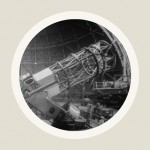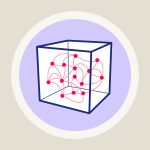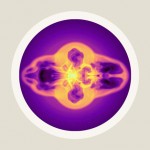The many ways of building an empty, unchanging universe
More information on one particular answer to the question of how much variety is permitted in general relativity – how many ways are there of constructing a universe that is completely empty of all matter?
An article by Piotr Chrusciel
Finding the general laws of nature is only the first step towards a physical description of the world. As a second step, indispensable when it comes to comparing theory with observation, physicists need to find simple models governed by those laws. For instance, in order to test Newton’s description of gravity, physicists start with a simple set of models – a small spherical mass orbiting a larger spherical mass under the influence of gravitational attraction, as described by Newton’s law of gravity. When the larger mass is identified with the sun, the smaller mass with a specific planet, the motion of the spherical masses in the model should approximate the motion of a planet around the sun. Since the physical laws are written in the form of equations, and since a model that obeys these laws must satisfy the relevant equations, such models are commonly called solutions.
Settling down: Stationary solutions
Of special interest are so-called stationary solutions. These are solutions whose features do not change over time, for example the gravitational field of a single spherically symmetric star at rest. Such solutions have a great advantage: They are much easier to construct than truly dynamical solutions, in which a system undergoes a complex evolution.
Also, it is to be expected that many systems that do undergo a more complicated evolution will settle down as time passes, and that in the final stages, they will reach a simpler, stationary state. For these reasons, stationary solutions are of great interest to physicists.
This holds true for general relativity as well. Many researchers believe that dynamical, complex solutions of Einstein’s equations – for instance, a model universe that contains two black holes orbiting and merging, emitting gravitational waves all the while – will settle down to a simpler, stationary state. (Whether or not this can be shown to be true is a major challenge for mathematical general relativity.)
One interesting question to ask about stationary solutions concerns their variety. Given a set of physical laws (and, possibly, some additional assumptions), how many different kinds of stationary solution are there? Physicists are far from being able to give a complete answer to this question, but even the simplest version of the question – concerning solutions in which no matter whatsoever is present – has led to very interesting results.
How many ways to build an empty, unchanging model universe?
So how many solutions are there without any matter – how many ways to build an empty, unchanging model universe?
There is a very similar question in another physical setting, that of electrostatics: for any given configuration of electric charges, the laws of electrodynamics (called Maxwell’s equations) allow us to find appropriate electric and magnetic fields (solutions of these equations). Assume furthermore that we restrict ourselves to solutions with a finite total energy (this excludes, say, the case where all of space is filled with simple electromagnetic waves). Now imagine that there are no electric charges present – the electrostatic version of an empty universe. In that case, there is only one solution, and it is not in any way interesting: Empty space in which the electric and magnetic fields vanish at every point.
Is the situation the same in general relativity? How many different varieties are there of unchanging model universes that are empty of matter?
Actually, the situation is somewhat different. If a given model universe is empty and, as far as we can see, no matter is present, that could mean that there was no matter present from the very beginning. But since we are interested in stationary solutions as end-states of an earlier evolution, we need to take into account another possibility: That matter was present originally, but has since vanished into a black hole. This is nothing that can be excluded a priori – objects such as event horizons can be formed as the solutions evolve, and stationary black holes are perfectly legitimate end states, for instance of stellar evolution.
One might think that a universe containing a black hole is not empty, but in an important sense, it is just that: The basic equations of general relativity, Einstein’s equations, tell us how the presence of matter (more precisely, its energy and pressure) curves spac-time. From the way that spacetime containing nothing but a single black hole is curved, it is possible to tell that no matter at all is present outside of the black hole’s event horizon. If a star collapses to form a black hole, all the star’s matter “falls over the edge”, and becomes inaccessible to observations by anyone who stays outside. (It is thought that all matter beyond the horizon will eventually be crushed in a spacetime singularity which forms there, but this is a completely different story, irrelevant for the discussion, because things happening inside the horizon cannot be detected from the outside).
Thus, with the possibility of black holes, the situation is much more interesting in general relativity than in electrostatics. If one assumes that there are no sources of gravity – just empty space, vacuum containing no matter and no other forms of energy – and if one explicitly demands that there be no horizons, then the unique stationary solution of the Einstein vacuum equations is Minkowski space-ime – the flat spacetime of special relativity. But for the less stringent demand that there only be no sources of gravity, the possible presence of a black hole (of a horizon which represents an “inner boundary of spacetime”) makes for more variety, corresponding to solutions in which all sources of gravity have disappeared into the black hole.
Further Information
Colophon
is a professor of gravitational physics at the University of Vienna. His research covers a wide range of mathematical topics related to Einstein’s equations.
Citation
Cite this article as:
Piotr Chrusciel, “The many ways of building an empty, unchanging universe” in: Einstein Online Band 02 (2006), 02-1004









